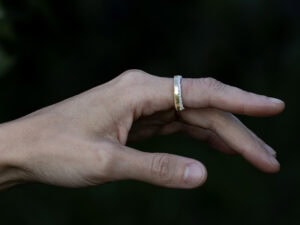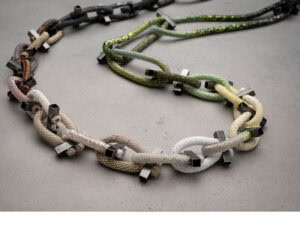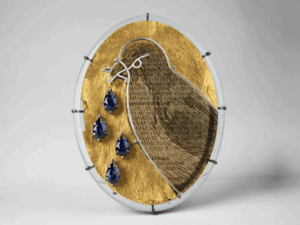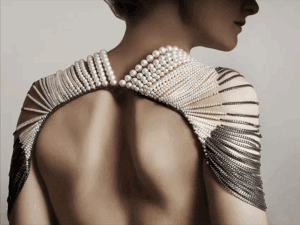I didn’t win this year’s World Championship Belt Buckle Competition. The winning buckles are fascinating, ranging from beautiful to funny to powerful. Some are unwearable in the general sense, or at least are too large, too loud, too inappropriate to actually wear as a buckle.[i] They’re art. But other buckles might be seen as appropriate for some bodies, not others. The same jewelry that’s considered easily and commonly wearable by some people is considered unwearable—too large, too loud, too inappropriate—by others.
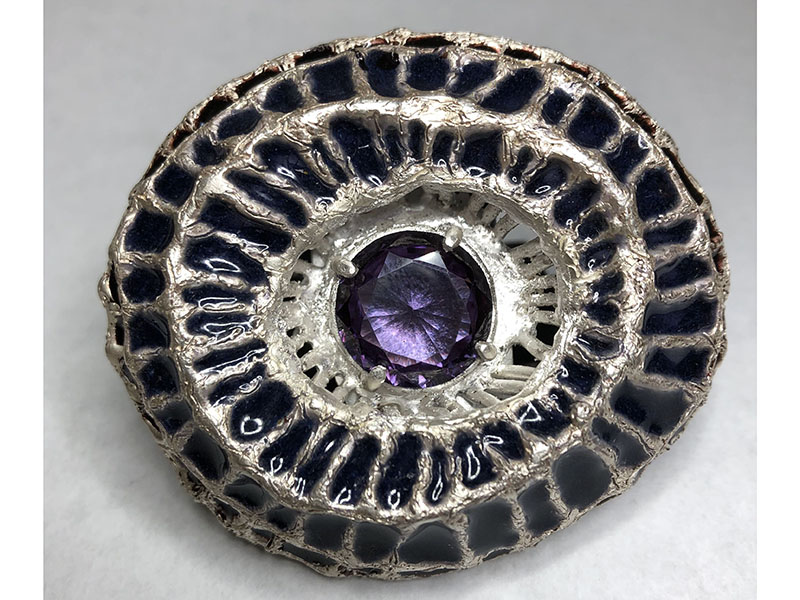
For working-class men, big belt buckles can be part of a legitimate outfit.[ii] Decorated with bucking horses and longhorn, the buckle identifies the rural cowboy as much as it holds up his Wranglers. Ornate belt buckles are the trophies for championship rodeo rides. Last year’s winner of the Professional Bull Riders World Finals commented, “I had a dream since I was a kid to wear that gold buckle,” upon winning his own.[iii] Outlaw bikers also wear large belt buckles, emblazoned with eagles, along with their leather jackets.[iv]
For these groups of men, not necessarily known for their taste in jewelry, belt buckles are an accepted and even expected form of adornment. But try to get the belt buckle of the Cheyenne cowboy on an elderly, upper-class woman in New York’s Upper East Side. It will never happen.
At the same time, however, these elderly rich women wouldn’t head out to lunch without a big brooch. The prized Boivin starfish brooches, of which only three to five exist in the world, have exchanged hands among some of the wealthiest women since the mid-1930s. Often purchased by the women for themselves, these jewels are 4 to 5 inches across of 18-karat gold encrusted with more than 300 rubies and amethysts. These women, upper class by any measure, wear big brooches to show it.[v]
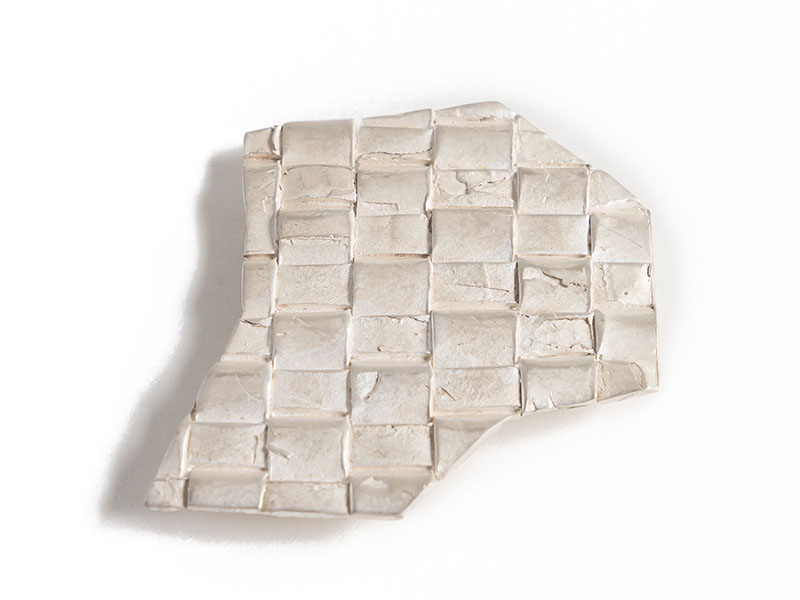
And Madeline Albright, the first woman U.S. Secretary of State, never negotiated without a big brooch. Her massive bejeweled eagles, snakes, bees, and doves were so heavy they could damage her clothing, but she used them to send messages of peace, war, conflict, and compromise to other state leaders. They also sent messages of Albright’s age, gender, and class, and then, in the touring exhibit of 200 of her brooches, symbolized her success in a role that no one like her had ever held before.[vi]
The buckles and brooches display distinct and even oppositional gender and class identities. The 17-inch distance between the brooch on the chest and the buckle at the waist might as well be the 1,700 miles between Wyoming and New York.
And while a wealthy young black man in New York City might wear a big, custom-made, diamond-encrusted pendant to similarly show his success,[vii] his pendant is no more wearable by the cowboy or the lady who lunches than their buckle or brooch is wearable by him.

Theories of culture, such as those of sociologist Pierre Bourdieu, have long emphasized the differences in tastes between social groups. The upper, middle, working, and lower classes, Bourdieu concluded, each have their own distinct tastes in all aspects of culture—music, food, clothing, and jewelry. But differences in taste, Bourdieu argues, are not treated equally. Rather, differences in tastes are used to reproduce the exclusive position of some people over others. The tastes of the upper classes are defined as the capital needed to succeed; the tastes of the other classes are considered lesser, deterring upward mobility.[viii] So as a Latina graduate student, writing in the New York Times, said, by the time she entered the Ivy League, “I was only wearing tiny studs. I felt that wearing large hoops would make me stand out, make me seem too loud, too visible, too ghetto, too black.” As she explained, “Earrings were easier to remove than my last name, my accent.”[ix]
We often emphasize the differences among us over the similarities. Differences can’t be ignored, but they can be used to celebrate and preserve our rich cultural diversity. But at the same time, our similarities can’t be ignored, but can be used to recognize and respect our shared experiences.
Among our differences, there’s a lot of similarity that often gets overlooked. About a decade after Bourdieu’s work on cultural distinction, sociologist David Halle went into the homes of upper- and working-class families in New York City to see what kind of art they had hanging on their walls. He found landscapes in the most homes, across classes. Some people, given their greater wealth, had more expensive paintings, by artists with more recognizable names. There were also some differences in the time periods and geographic locations of the depicted landscapes. But everyone seemed to enjoy the connection to calm, nature, and sofa color that landscapes provided. Halle concluded that differences in taste across groups have been exaggerated.[x]
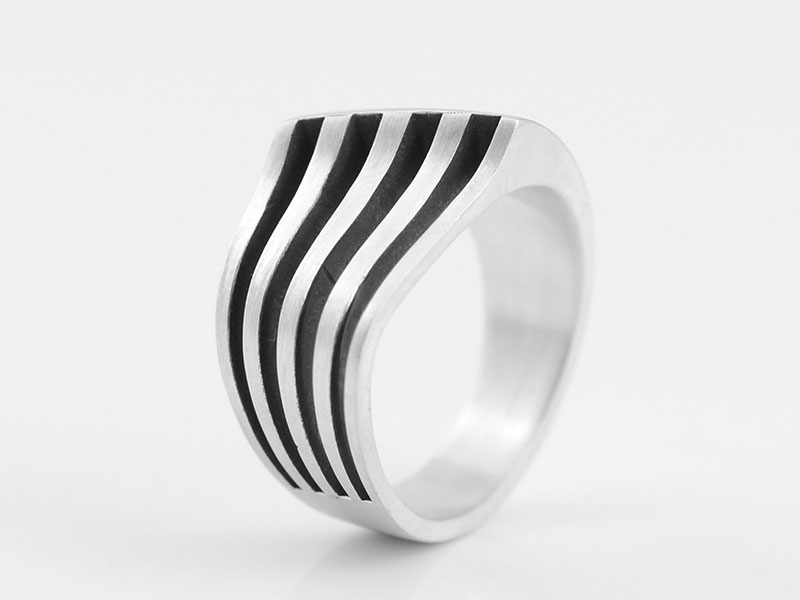
The belt buckles, brooches, and pendants described earlier in this essay, while at first seemingly dramatically different and appropriate for only certain distinct people, actually share a lot in common. They are big, bold, and eye-catching; they are decorative rather than functional; and they display success, status, and pride.
In fact, what if you took a belt buckle, changed the backing, and hung it on a chain? Or, what if you took that belt buckle and changed the backing to transform it into a pin? The belt buckles of working-class men, when raised about a foot and a half on the body, could become the brooches of upper-class women. The brooches of old, white women, lowered a few inches, could become the pendants of young, black men. Lowered a few more inches, the pendants of black men could become the belt buckles of white men.
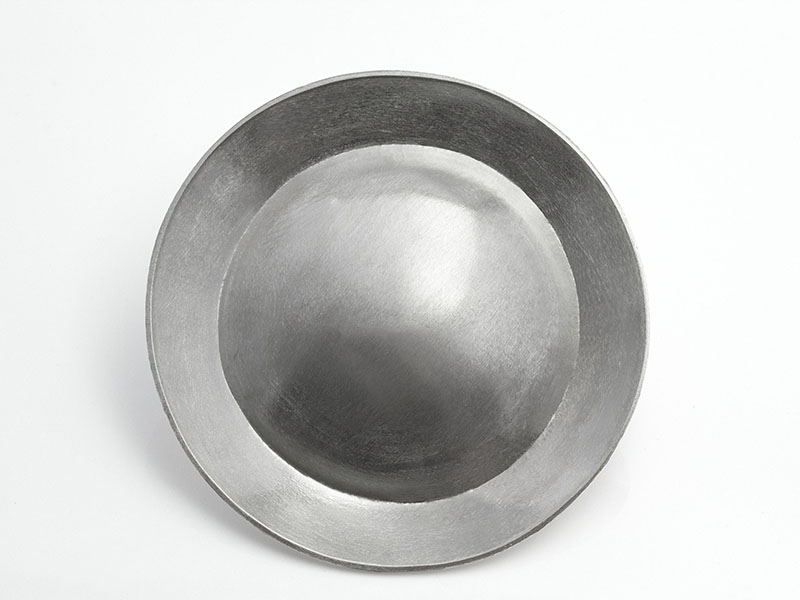
For the World Championship Belt Buckle competition, I tried to actually do this—make a belt buckle that could be worn as a pendant and as a brooch, too. My goal wasn’t to erase our differences but to highlight our commonality. It wasn’t easy to do. I played it safe and focused on a basic foundation, but even then, at times, I didn’t know what I was doing, was frustrated and annoyed, and saw and thought only the worst. The end result could’ve been bolder, and it’s far from perfect. And it’s just barely wearable.
But looking again at the winning belt buckles from this perspective, I can see that many of them—in all of their beauty, humor, and power—are wearable in a variety ways by a large and diverse mix of us. Indeed many jewelry pieces, including those shown in the photos accompanying this article, aren’t clearly wearable on only one “kind” of person. They can be worn across many of our differences, including variation in class, race, gender, sexuality, age, and region. Our adornment can be shared; all we need is the right backing.
[i] https://artjewelryforum.org/courtney-kemp-beyond-unwearable.
[ii] Cintra Wilson, Fear and Clothing: Unbuckling American Style (New York: W.W. Norton, 2015).
[iii] https://www.star-telegram.com/sports/outdoors/article221520180.html.
[iv] Daniel R. Wolf, The Rebels: A Brotherhood of Outlaw Bikers (Toronto: University of Toronto Press, 1991).
[v] Cherie Burns, Diving for Starfish: The Jeweler, the Actress, the Heiress and One of the World’s Most Alluring Pieces of Jewelry (New York: St. Martin’s Press, 2018).
[vi] Madeline Albright, Read My Pins: Stories from a Diplomat’s Jewel Box (New York: HarperCollins, 2009).
[vii] Elena Romero, Free Stylin’: How Hip Hop Changed the Fashion Industry (New York: ABC-CLIO, 2012).
[viii] Pierre Bourdieu, Distinction: A Social Critique of the Judgement of Taste (Cambridge, MA: Harvard University Press, 1984)
[ix] https://www.nytimes.com/2018/01/11/style/hoop-earrings-identity.html.
[x] David Halle, Inside Culture: Art and Class in the American Home (Chicago: University of Chicago Press, 1993).

